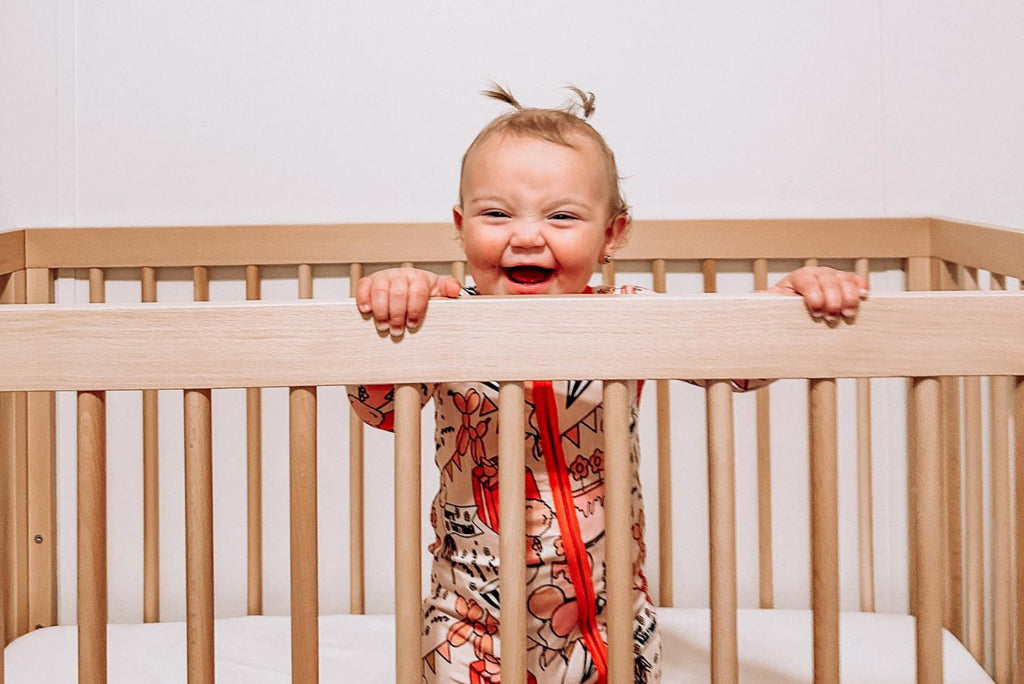Crib Safety: How to Make Sure Baby Can Sleep Safely

We’ve said it before, and we’ll probably say it hundreds of times again: Good sleep matters.
While it’s perfectly normal for infant sleep to stop and start, evolve and change, and certainly involve a lot of middle-of-the-night wakefulness for at least the first few months, it’s essential to create a sleeping environment for you and your little one that promotes the best possible rest for BOTH of you.
For baby, that means a sleeping space that’s safe, comfortable, and secure. And for you, that means a comfy space of your own, as well as the peace of mind that comes with knowing baby is (you guessed it) safe, comfortable, and secure.
To help you get there, here are some essential safety practices for good sleep and better peace of mind:
Choose a Sturdy Crib:
In choosing the right crib, make sure baby’s crib conforms to all the latest safety standards and has no loose screws, sharp edges, or space between the crib and the mattress.
A GREENGUARD Gold certification guarantees a crib isn’t offgassing too many harmful fumes, and baby-safe finishes help you rest easy once little ones start teething.
Make Sure the Mattress Fits Well:
Double check that the mattress fits snuggly into the crib base, with no gaps between the mattress and crib walls.
Once your baby can sit up or stand, make sure the mattress is set in the lowest position to help prevent late-night climbing adventures.

Nothing in the Crib but a Fitted Sheet:
Blankets, pillows, and stuffed animals sure are cute - but they don’t belong in the crib. Make sure the only items in your crib are a snug fitted sheet and your baby.
If you’re worried about your baby being too cold, use a swaddle or a sleepsack for an extra layer of warmth. Making sure the crib is clear of extra items helps ensure proper airflow and reduce the risk of suffocation or getting stuck in an uncomfortable position.
Avoid Bumper Pads:
Are crib bumpers safe? No, bumpers hurt more than they help by creating a suffocation and strangulation risk. You’re better off without them, and your baby will never know the difference.
Keep the Crib Clear:
Make sure there are no art pieces, light fixtures, or items on shelves above baby’s sleep space that could potentially fall into the crib.
Once your little one is rolling over, double check for cords, toys, or window treatments within baby-reach distance on all sides.
If you’re using a mobile (or anything else that hangs above the crib), make sure you follow the manufacturer’s instructions for safe installation.

Inspect the Crib Often:
Check your crib regularly for any damage, loose screws, or sharp edges. If you do find loose parts or damage, make sure it gets repaired or replaced right away!
Follow Safe Sleep Guidelines:
We always recommend following your doctor’s recommendations for best sleep practices, which often include a lot of the above! In addition, put baby down to sleep on their back and make sure the nursery is at a cool, but comfortable, temperature.
Check with your pediatrician for additional advice, and for affirmation on the decisions you’ve already made!
Now that you’ve got a safe, secure, and hazard-free sleep environment for baby, it’s time to set up the baby monitor and get some solid rest yourself. And remember - learning to sleep through the night takes time, and patience, and a lot of trial and error.
Whenever the late-night feeding and rocking feels like too much, take a few deep breaths, ask for help and support if you need it, and remember that sleep will come easier with time for both of you.
It doesn’t seem like it now, but you’ll look back on this sleepless phase fondly.
And until then, we’ll be here to help you create safe sleep spaces, to remind you you aren’t alone, and to cheer you on.
